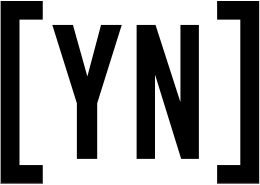Hard gel is a fantastic medium for sculpting stunning nail enhancements, but it’s also prone to a few classic mistakes that nearly every tech makes at some point. If you’re already familiar with the common pitfalls of working with acrylic, this list may not surprise you, but for beginners and intermediate users of hard gel, these tips are essential. Mastering hard gel application is truly an art form, and great art depends on great technique. By being mindful of these frequent missteps, you can fine-tune your process and create sculpted nails your clients will be proud to wear.

#1: Improper Prep
Thinking that hard gel nails require less prep than acrylic is an outdated belief that needs to go. Without thorough prep, flawless enhancements just aren’t possible. Buffing the nail alone won’t cut it. Start by gently pushing back the cuticles, then use a medium crosscut bit on your e-file to remove any remaining cuticle and take the shine off the natural nail. Gel needs something to grip onto, and a surface that’s only been buffed won’t provide enough texture. Cleanse with Swipe and follow with a coat of Protein Bond to prime the nail properly.
#2: Skipping the Base
Greg always says that the base is like the foundation of a house, and when it comes to building hard gel, we couldn’t agree more. Too many pros skip the base during full sets, and it’s even more common to forget it during fills. But the base provides an essential layer for the builder gel to adhere to. Push the base gel into the nail with your brush (don’t float it like you would the builder). The application should be thin and even. Cure it under a UV/LED lamp, either while working on the other hand or for 30 seconds on its own.
#3: Using Acrylic Techniques With Gel
A lot of nail pros first learn acrylic techniques and then struggle to transition to gel. Acrylic requires “bunny hopping” your brush to manipulate the product, but that same technique can ruin a hard gel application. Unlike acrylic, hard gel should be floated, not pushed. Floating your brush gently across the surface allows you to guide the gel without introducing air bubbles. If you tend to be heavy-handed, try using the YN Precision Gel Applicator, which makes floating practically foolproof. After sculpting, cure the gel, but don’t go the full minute just yet. That leads us to the next mistake...
#4: Leaving the Nail Form On Too Long
Unlike acrylic, hard gel won’t cure completely with the nail form still in place, especially along the sides. According to expert Tracy, the key is to give the gel an initial flash cure just long enough to set it, then remove the form and finish curing for a full minute. This is especially important when working with white gel. If you skip this step, you might end up with the dreaded “zit effect, ” where the outer surface appears cured, but the inside remains gooey and oozes during filing, ruining the nail and your hard work.
#5: Not Prepping the Tips
If you use nail tips for your hard gel applications, there’s one mistake you’ve likely made: prepping only the seam where the tip meets the natural nail, and not the rest of the tip itself. Gel won’t bond well to the smooth, glossy surface of out-of-the-box tips, which can cause chipping or lifting. Use your e-file, or even a hand file, to rough up the entire tip and give it some texture so the gel can adhere properly. Tracy also warns against using white tips with gel, as UV light can’t penetrate from underneath. While it may be tempting to use the white tip as a French guide, you’ll end up with curing issues.
Have you found yourself making any of these common hard gel mistakes? You’re not alone. Recognizing these pitfalls is key, because when you know where other pros tend to go wrong, you can stay ahead of the curve and avoid those issues in your own work.




